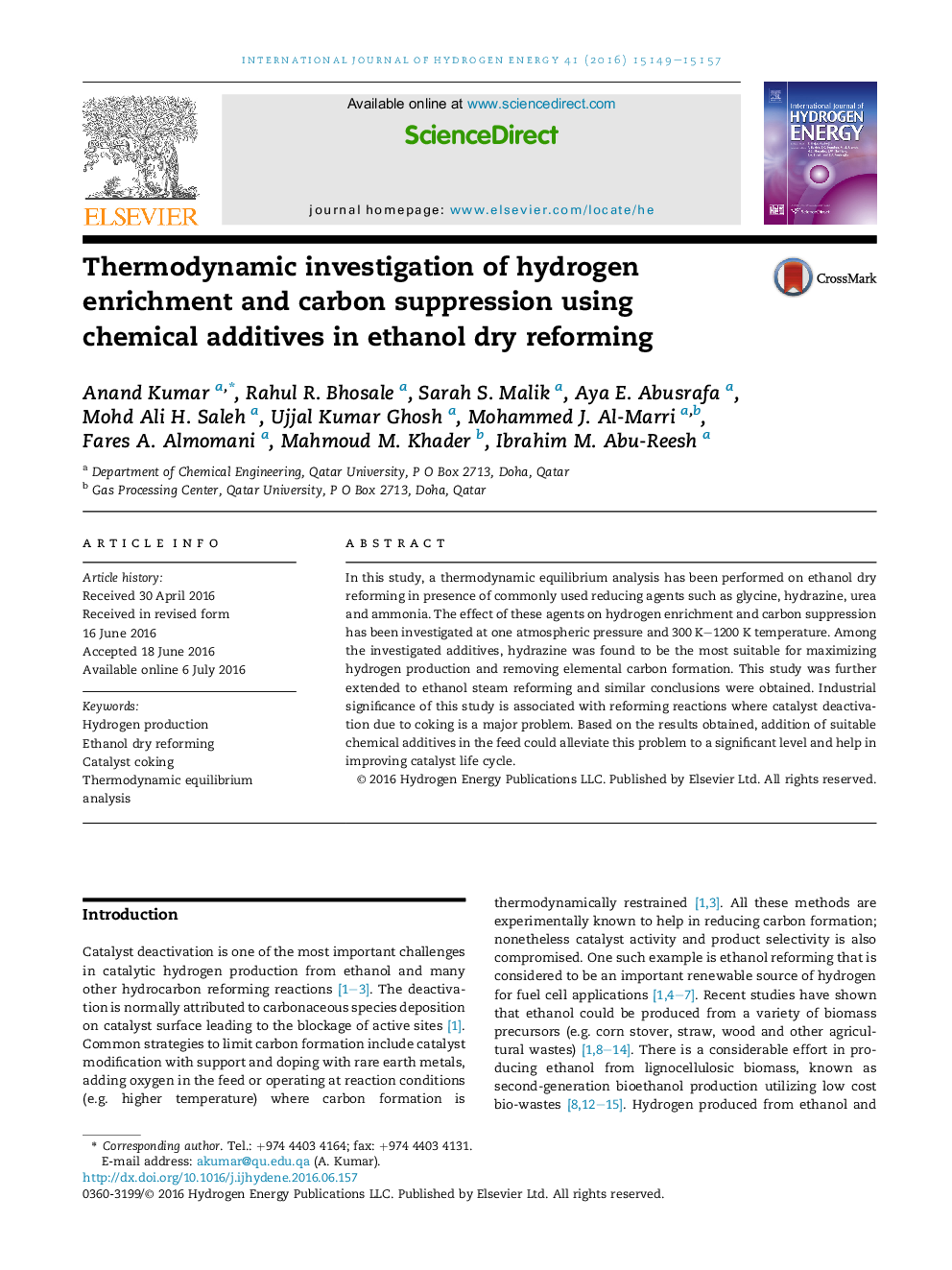| Article ID | Journal | Published Year | Pages | File Type |
|---|---|---|---|---|
| 1270393 | International Journal of Hydrogen Energy | 2016 | 9 Pages |
•Thermodynamic equilibrium analysis was performed on ethanol dry reforming.•Adding reducing agents, e.g. hydrazine, increases hydrogen production.•Addition of hydrazine in the feed removes carbon formation.•Addition of reducing agents helps in getting synthesis gas at optimum conditions.•Similar conclusions were obtained in case of ethanol steam reforming.
In this study, a thermodynamic equilibrium analysis has been performed on ethanol dry reforming in presence of commonly used reducing agents such as glycine, hydrazine, urea and ammonia. The effect of these agents on hydrogen enrichment and carbon suppression has been investigated at one atmospheric pressure and 300 K–1200 K temperature. Among the investigated additives, hydrazine was found to be the most suitable for maximizing hydrogen production and removing elemental carbon formation. This study was further extended to ethanol steam reforming and similar conclusions were obtained. Industrial significance of this study is associated with reforming reactions where catalyst deactivation due to coking is a major problem. Based on the results obtained, addition of suitable chemical additives in the feed could alleviate this problem to a significant level and help in improving catalyst life cycle.
